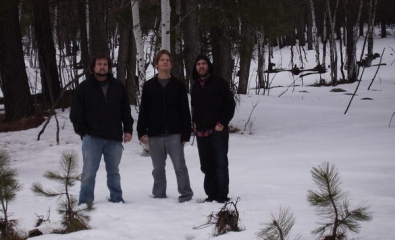
A prevalent veneration for the past can certainly be detrimental to an artist’s work if their techniques are either outdated or generic, but holding such a high esteem for successful precedents can also prove to be quite beneficial when the artist maintains a constant yearning for innovation and quality. This is especially true in the field of music, where artists can flawlessly imitate a style performed regularly over 40 years ago due to the technological resources we have today. Many musicians and fans alike feel that this modernistic advantage causes some artists to overly regard style over substance (the actual songwriting) and this is very true, but it also reminds us how important songwriting and natural chemistry is in appliance to the creation of music. With many computer programs that replicate reverb, droning, and other aspects of audible production with names of presets that are precisely indicative of certain glaring genres like “dream-pop”, “shoegaze”, and “hard rock”, it is not entirely difficult for budding artists today to attempt any style and the accustomed method of production within it. This can be a productive measure for the sake of accessibility because music fans can now pursue songwriting and realistically attempt to sound like their valued influences. Its detriment, however, arrives in the fact that many may regard it too highly and dismiss the importance of songwriting and creativity altogether.
While it is extremely noticeable that The Harpeth Trace employ a stylistic formula that is highly reminiscent of the past, they are one of the few acts that chooses to focus on songwriting to an equal or higher extent. Their interpretation of subdued ‘60s pop is undoubtedly one of the most accurately enjoyable versions I have heard in quite some time, and this is not even the main reason why I am so hooked. Instead, it is the band’s magnificent songwriting that most consumes me. While maintaining a high degree of pure nostalgic bliss, this trio-gone-duo utilizes a wide array of moods and emotions within a consistent showcase of instruments that complement an anecdotal lyrical approach with rich imagery and intelligent metaphorical allusions. Multiple types of guitars with accentuated delay and reverb, weightless backing keys, and a delicate rhythm section are the primary contributors to most of the tracks on the group’s full-length debut, On Disappearing, and the three members did an excellent job of infusing a sense of equality within them. On a track like “Who Knows Where Are You”, though, the group relays their atmospheric brilliance with additional elements like a whirring synth pad that consumes the background as a clip of a bird chirping as played as the gentle rhythm section incorporates itself over Josh Kasselman ‘s caressing vocals. It is just a single example of many throughout an album full of memorable ones.

Keeping in sync with their steady grasp on the past, The Harpeth Trace take their name from Kasselman’s former childhood street name (Harpeth Trace Drive). If he added his first pet’s name, I wonder if the name would have ended up looking like something on a porn star name generator. That interesting tidbit aside, the initial formation of The Harpeth Trace revolved around the workings of singer/songwriter Kasselman, bassist/guitarist Rune Freeman, and drummer Robert Poynter, three friends from L.A. and Phoenix who had decided that their stylistic direction of relaxing ‘60s pop and lo-fi alternative was the right way to go. Freeman left in late 2005, but Barry Poage was quick to take over his role. Capitalizing on their stylistic vision, The Harpeth Trace released their first release in 2005, entitled Man and the Cousin. Drawing critical acclaim for its timeless ability to capture nostalgic pop music while remaining within the realm of contemporary production, fans of psychedelic and ‘60s pop took notice and the group found a burgeoning fan base at their side as they began work on their full-length. Contrary to the recent release date of On Disappearing, the album was actually finished in December of 2006. Kasselman, though, opted to release the album in January of 2008 instead because he spent the majority of 2007 on a trip across Thailand, Laos, and Cambodia.
Unable to support the album from such a distant location, the decision to wait and release the album after he returned to US now looks like a wise one. After all, On Disappearing is one of those few debuting full-lengths that simultaneously offers a focused style and excellent songwriting that supplements that style in ways that are both innovative and captivating. Kasselman truly makes his mark as the group’s songwriter and vocalist, his airily high-pitched vocals being somewhat reminiscent of The Clientele’s Alasdair MacLean. The stylistic comparison to The Clientele is prevalent as well due to their mutual reverence for ‘60s pop, but I find The Harpeth Trace to have a significantly more subdued sound that is more focused on gradually evolving guitar progressions, intricately evolving rhythm sections, and progressive layers over The Clientele’s sweeping string arrangements and, in comparison, more bustling rhythm sections. For instance, one of my favorite tracks on On Disappearing, “Dead Eyes” begins with a single guitar progression before it gradually expands into an intricate array of multifarious guitars, bass, and percussion. The intensity of the group’s rhythm section is often indicative of the overall instrumental involvement, with the transitional movements in the bass lines and rhythmic spurs often establishing stellar hooks over impeccable harmonizing; this particular technique occurs in “Dead Eyes” around 01:55 after the keys emerge as yet another stellar accompanying attribute.
While “Dead Eyes” proves rather accessible for its ethereal grasp of ‘60s pop, another track like “Who Knows Where You Are” infuses psychedelic pop with minimalism (complements of the chirping clips) to create an outstanding effort that adds more depth and experimentation to an album that already boasts a nice amount of it. After the whirring synth pad becomes more subdued, a guitar progression emerges for the elegantly applicable chorus, one that features multiple vocal harmonies and a somber bass line that truly takes over the melodic bulk in fantastic form. “Georgia May”, while still in the vein of ‘60s pop, is the briskest effort on the album with a tinge of folk and country in Kasselman’s altered delivery. In terms of additional instrumentation, strings make a dramatic appearance toward the conclusion of “Kodachrome Wolves” to establish it as a graceful concluding effort alongside the sparse mixture of keys and acoustics in the beautiful closing “Hotel Bristol Forever” to wrap up an excellent album. Currently, after the departure of Freeman and recently Poynter, The Harpeth Trace is down to a duo with Kasselman and Poage. Still, as their web site states, they are already in the studio working on another album and “maybe even two”. Based on the effort of On Disappearing alone, that sounds like great news to me.
——————————————————————————————
[audio:http://mineorecords.com/mp3/htrace-dea.mp3]——————————————————————————————
The Harpeth Trace – Georgia May
——————————————————————————————
The Harpeth Trace – Who Knows Where You Are
——————————————————————————————






This band sounds great! You are correct about the quality of their songwriting. The emotional level of their writing is excellent. I really enjoy this blog. Keep it up!